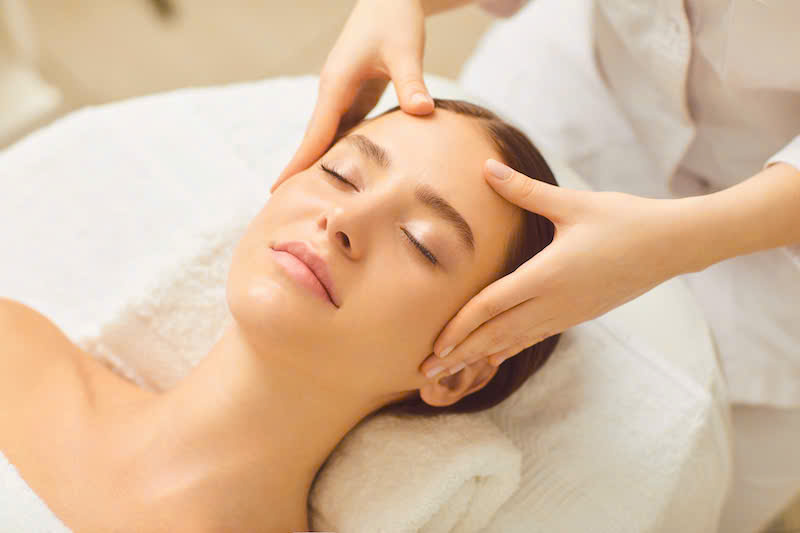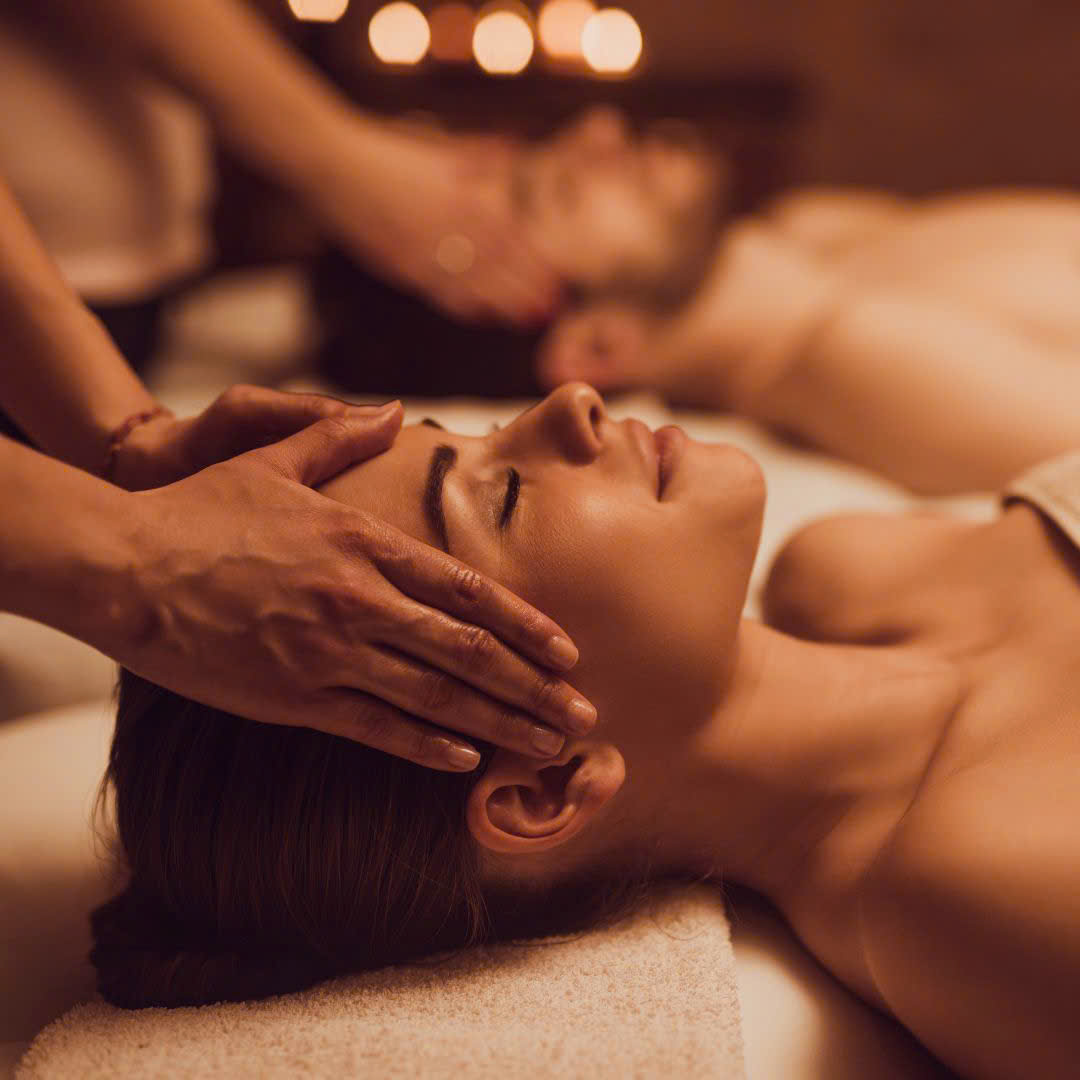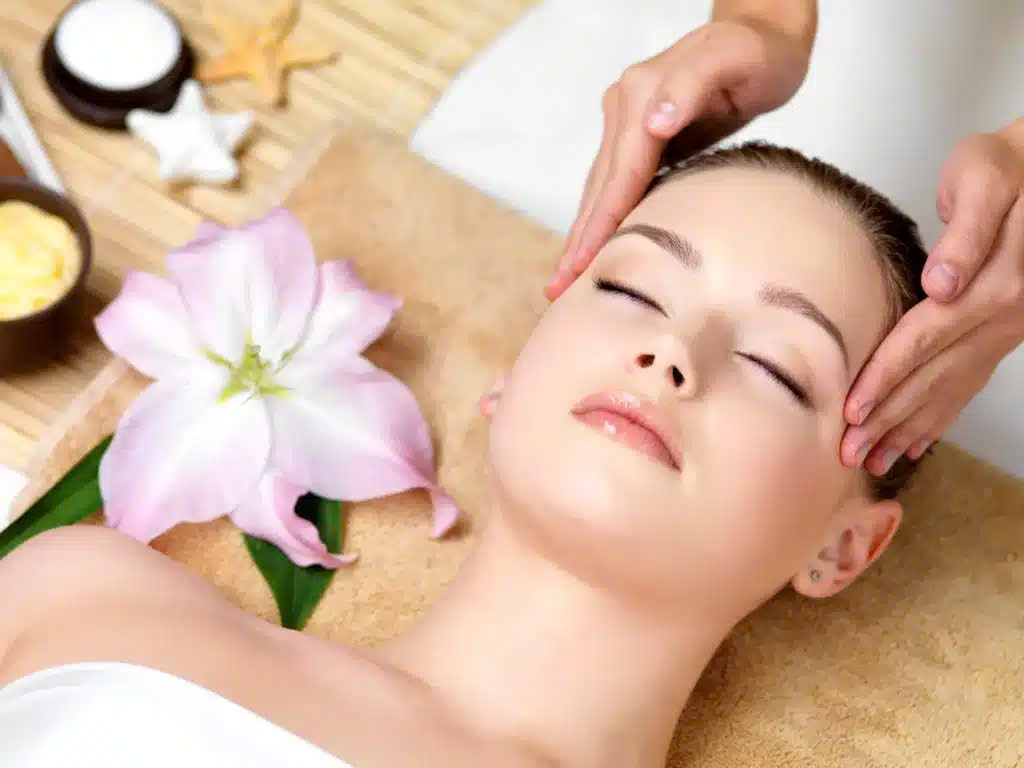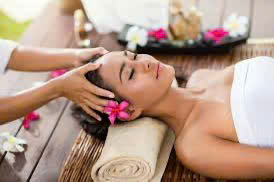Head Massage Benefits: Relieve Headaches & Boost Your Mind
In today’s fast-paced world, stress, tension, and fatigue are common issues affecting mental clarity, physical health, and overall well-being. Among various natural therapies, head massage has gained popularity for its numerous benefit. Not only does it provide relaxation, but it also offers tangible health advantages, especially when it comes to alleviating headaches, enhancing mental acuity, and improving hair health. This comprehensive guide explores everything you need to know about what is head massage, why it’s beneficial for headaches, your mind, and hair, why you need head massage, and how exactly it works.

Head massage
A head massage is a therapeutic practice that involves gentle manipulation of the scalp, neck, and shoulder areas to promote relaxation, stimulate blood flow, and reduce tension. It has roots in traditional healing systems like Ayurveda, Chinese medicine, and reflexology, emphasizing the interconnectedness of the scalp with various bodily functions.
The head massage process usually combines kneading, tapping, circular movements, and pressure application, tailored to individual needs. Its effects extend beyond just feeling relaxed, influencing physical health, emotional stability, and even spiritual wellness.
Understanding its core components reveals why head massage holds a cherished place in holistic health practices. It’s both an art and science, combining intuitive touch with anatomical knowledge. The technique can be performed professionally or as a self-care ritual at home, provided proper techniques and pressure points are utilized.
Key aspects of head massage
- Techniques used: Gentle strokes, finger pressure, acupressure points, and rhythmic tapping.
- Duration: Typically ranges from 10 to 30 minutes, depending on individual needs and comfort.
- Tools: Fingers, scalp brushes, or specialized massage devices may be used.
- Frequency: Regular sessions—weekly or bi-weekly—maximize benefits.
Historical perspective
Historically, head massage has been an integral part of many cultures:
- In Ayurveda, it’s called “Shiro Abhyanga,” aimed at balancing doshas and calming the nervous system.
- Traditional Chinese medicine emphasizes stimulating acupuncture points on the scalp to improve qi flow.
- Reflexology suggests that specific zones on the scalp relate to organs and systems in the body, offering targeted benefits.
Scientific evidence supporting head massage
Recent studies indicate that head massage can reduce cortisol levels (stress hormone), increase serotonin and dopamine (feel-good neurotransmitters), and improve sleep quality. These findings underscore its potential in managing anxiety, depression, and stress-related conditions.
What is head massage
What is head massage? At its core, it’s a therapeutic technique involving manual stimulation of scalp muscles, nerves, and tissues. But it’s also much more—an ancient practice rooted in promoting holistic health that aligns physical, emotional, and energetic well-being.
This therapy is designed to activate key zones on the scalp, including acupressure points and nerve endings, to induce relaxation and stimulate circulation. The what is head massage question often leads to curiosity about its mechanisms and purpose, which range from relief of pain to mental refreshment.
Components of head massage
- Scalp manipulation: Soft, precise strokes to loosen tight muscles.
- Pressure points: Targeting specific spots linked to different organs or energy pathways.
- Incorporation of oils: Essential oils like lavender or peppermint can enhance sensory experience and therapeutic effects.
- Complementary techniques: Neck and shoulder massage to relieve tension radiating from the scalp.
Variations of head massage
- Swedish-style head massage: Focuses on relaxing superficial muscles.
- Shiatsu head massage: Uses finger pressure on specific points based on Japanese tradition.
- Reflexology: Applying pressure on zones connected to other parts of the body.
- Hot stone or oil-infused massage: Adds a sensory layer to deepen relaxation.
Expected sensations during the session
Most people report feelings of calmness, warmth, tingling, or slight pulsation. These sensations indicate increased blood flow and endorphin release, reinforcing the therapy’s effectiveness.
How to perform a basic head massage at home
Learning simple techniques can empower you to incorporate head massage into daily routines. Using fingertips to make gentle circular motions along the scalp, applying light pressure on acupressure points, and ending with slow strokes can yield immediate relaxation and longer-term benefits.
Head massage benefits for headaches
One of the most compelling reasons to practice or seek out head massage is its proven efficacy in alleviating various types of headaches, especially tension headaches and migraines. These pains often originate from muscle tension, poor posture, stress, or vascular issues—all of which head massage can help address.
How head massage relieves headache pain
Headache relief through massage primarily stems from improved blood circulation, reduced muscle tension, and activation of pain-relieving neural pathways. By targeting specific areas like the temples, forehead, and base of the skull, head massage can interrupt pain signals, promote relaxation, and restore balance.
The connection between tense muscles and headaches
Tight muscles in the scalp, neck, and shoulders can contribute significantly to headache frequency and intensity. When these muscles contract or spasm, they compress blood vessels and nerves, intensifying pain. Gentle manipulation during head massage eases this tension, allowing better blood flow and nerve function.

Evidence supporting head massage benefits for headaches
Clinical trials have demonstrated that regular head massage reduces the severity and duration of tension headaches. Patients report fewer episodes and less medication dependence. Additionally, massage provides a non-invasive, drug-free alternative that complements conventional treatments.
Techniques specifically effective for headaches
- Temples: Gentle circular motion helps relieve temporal tension.
- Forehead: Light pressure along brow ridges relaxes frontal muscles.
- Base of skull: Deep strokes here can alleviate occipital headaches.
- Neck and shoulders: Releasing tension in these regions reduces referred pain.
Precautions and considerations
While head massage is generally safe, individuals with certain medical conditions like severe hypertension, skin infections, or neurological disorders should consult healthcare professionals before treatment.
For your mind
Beyond physical relief, head massage acts as a powerful mental stimulant. It nurtures emotional balance, enhances concentration, and promotes mental clarity. In our digital age, where overstimulation is commonplace, such a practice can serve as a vital mental health tool.
The role of head massage in reducing stress and anxiety
Gentle pressure and rhythmic movements during head massage stimulate parasympathetic nervous activity—the body’s relaxation response. This helps lower cortisol levels, diminish feelings of anxiety, and promote a sense of calmness.
Enhancing mental focus and clarity
Regular massages boost blood and oxygen flow to the brain, leading to improved cognitive functions like concentration, memory, and decision-making. Incorporating head massage into daily routines or work breaks can rejuvenate mental faculties.
Facilitating emotional release
The scalp and head are rich in nerve endings and energy centers. Stimulating these areas can release stored emotional tension, foster mindfulness, and support emotional resilience. Many practitioners believe head massage can assist in processing subconscious stressors.
Impact on sleep quality
By calming the nervous system, head massage can promote deeper, more restful sleep. Better sleep enhances brain function, boosts mood, and supports overall mental health.
Creative insights and personal reflection
Engaging in head massage allows space for introspection. The quiet, focused state it induces encourages mindfulness and self-awareness, helping individuals connect with their inner thoughts and emotions more deeply.
And hair
Head massage isn’t solely about relaxation; it also plays an essential role in maintaining healthy hair. By improving scalp health and stimulating hair follicles, it can promote growth, prevent hair loss, and enhance shine.
How head massage stimulates hair growth
The scalp’s blood vessels deliver nutrients vital for hair follicle health. Massaging increases blood circulation, ensuring follicles receive adequate nourishment. This process can awaken dormant hair roots and strengthen existing strands.
Effectiveness in preventing hair loss
Stress-induced hair loss, such as telogen effluvium, can be mitigated with regular head massage. By reducing tension and boosting scalp vitality, massage supports an environment conducive to healthy hair growth.
Improving scalp condition
Dandruff, dry scalp, and clogged pores hinder hair health. Massage with appropriate oils can exfoliate dead skin cells, reduce buildup, and nourish skin tissues, fostering a healthier scalp environment.
Hair shine and manageability
Stimulating oils like coconut, castor, or argan during massage can moisturize hair shafts, minimize frizz, and improve softness. Consistent massage enhances hair texture and appearance over time.
Personal care tips for hair health
- Use gentle, circular massage motions regularly.
- Incorporate nourishing oils suited for your scalp type.
- Maintain scalp hygiene and hydration.
- Combine massage with a balanced diet rich in vitamins and minerals.
Why you need head massage
The necessity of head massage extends across physical, mental, and emotional domains. In an increasingly stressful society, integrating this practice is a proactive step toward holistic health.
Stress relief and emotional balance
Chronic stress affects every aspect of health. A head massage delivers immediate relaxation while contributing to long-term emotional stability by reducing tension held in the scalp and neck.
Enhancement of overall well-being
Regular massage supports circulation, immunity, and sleep patterns—cornerstones of good health. It’s a simple, accessible method to elevate your quality of life.
Prevention and management of ailments
From migraine prevention to alleviating sinus congestion, head massage is a non-invasive tool in managing common health concerns. It also complements other therapies and lifestyle modifications.
Cultural and personal significance
Many cultures consider head massage a sacred ritual or self-care tradition that fosters mindfulness, gratitude, and spiritual connection. Making it part of your routine can cultivate a deeper relationship with your body and mind.
Practical reasons to incorporate head massage
- To combat digital eye strain and mental fatigue
- To alleviate postural neck pain
- To improve scalp and hair health
- To foster a moment of calm amidst chaos
How it works
Understanding how head massage works involves exploring the biological, neurological, and energetic mechanisms involved.
Biological basis
Head massage enhances blood circulation in the scalp, delivering oxygen and nutrients to hair follicles and nerve endings. It also stimulates lymphatic drainage, reducing toxins and swelling.
Neural pathways
The scalp is densely packed with nerve endings connected to the brain via the trigeminal nerve and other cranial nerves. Stimulating these pathways activates relaxation responses and modulates pain signals.
Acupressure and energy flow
Traditional Chinese medicine posits that head massage stimulates acupressure points along meridians, restoring the smooth flow of qi (energy). This harmonization can lead to physical healing and emotional balance.
Endocrine and neurochemical responses
Massaging releases endorphins and serotonin, the body’s natural painkillers and mood enhancers. It also reduces cortisol, lowering stress and promoting well-being.
Practical insights into how to maximize benefits
- Use consistent pressure tailored to comfort
- Incorporate deep breathing for enhanced relaxation
- Combine massage with aromatherapy or soothing music
- Practice mindfulness during the session for mental clarity

Head Massage Benefits: Relieve Headaches & Boost Your Mind
Head Massage
Head massage is an ancient practice that has gained popularity across cultures for its restorative effects. As you delve into the significance of this therapeutic technique, it’s essential to recognize its historical roots and how it has evolved over time.
Historical Context
Historically, various cultures have embraced head massage as part of traditional healing practices. In India, the art of Ayurvedic head massage, known as “Shiroabhyanga,” integrates herbal oils and specific techniques to promote mental clarity and physical health. Similarly, in Japan, the practice of “Shiatsu” employs acupressure techniques on the scalp, contributing to relaxation and energy flow.
These historical precedents highlight not only the efficacy of head massage but also its cultural significance. By understanding where these practices come from, we can appreciate their role in holistic health and self-care.
Modern-Day Adaptations
In contemporary settings, head massage has adapted to fit various lifestyles. Spas and wellness centers offer specialized treatments integrating aromatherapy, hot stone applications, and advanced techniques tailored to individual needs. Moreover, with the rise of self-care movements, more people are learning to perform basic head massages at home to alleviate stress and tension.
This evolution of head massage showcases its versatility and relevance today. Whether it’s through professional services or personal practice, the existence of varied methods makes it accessible to all.
Techniques and Tools
To fully benefit from head massage, understanding different techniques is vital. Common methods include circular motions applied to the scalp, kneading of the neck muscles, and gentle pulling of hair strands. Additionally, tools like jade rollers or even electric scalp massagers can enhance the experience by providing deeper stimulation and relaxation.
Learning to use these techniques and tools effectively can maximize the benefits of head massage, making it a cherished part of personal health routines.
What is Head Massage
At its core, head massage is a form of therapy that focuses on alleviating tension in the scalp, neck, and shoulders through manual manipulation. Engaging in this practice can create a sense of balance and harmony within the body.
Differentiating Techniques
Understanding what constitutes head massage requires recognition of its various styles. Western approaches often prioritize relaxation and stress relief through soothing strokes and kneading, while Eastern traditions might focus on energy flow and acupressure points.
Each method brings unique benefits and can be tailored to suit individual preferences or requirements. The key lies in finding the right approach that resonates with you personally.
Mechanisms of Action
The effectiveness of head massage stems from several physiological actions. By applying pressure to the scalp and surrounding areas, practitioners stimulate blood circulation, facilitating oxygen and nutrient delivery to vital tissues. This process helps reduce muscle tension and induces relaxation.
Additionally, the neurological response triggered by head massage can activate the parasympathetic nervous system, creating feelings of calmness and reducing anxiety levels. Understanding these mechanisms further elevates the appreciation of this ancient practice.
Personalizing Your Experience
Personalization plays a crucial role in head massage. Individuals may choose to incorporate their preferred techniques, scenic environments, and even scented oils to create a more inviting atmosphere.
This customization enhances the overall experience, turning a simple relaxation technique into a deeply enriching ritual of self-care.

Head Massage Benefits for Headaches
For many, headaches are a common ailment that can significantly impact day-to-day life. It’s essential to explore how head massage can serve as a remedy for headache relief.
Types of Headaches Addressed
Head massage has been proven effective against various types of headaches, including tension headaches, migraines, and cluster headaches. Each type presents unique symptoms, and understanding their origins can guide appropriate treatment.
Tension headaches, often stemming from stress or poor posture, respond particularly well toas it helps relax tight muscles around the neck and forehead. On the other hand, migraine sufferers may find relief through targeted pressure points on the scalp.
Immediate Relief through Techniques
When experiencing a headache, utilizing specific techniques during can provide immediate relief. Gentle circular motions combined with light pressure on the temples, forehead, or occipital ridge can alleviate pain.
Additionally, incorporating deep breathing and mindfulness during the massage enhances the overall effect, creating a tranquil environment conducive to pain relief.
Long-term Impact and Prevention
Beyond immediate relief, regular can contribute to long-term headache prevention. By reducing tension, improving circulation, and promoting relaxation, individuals may experience fewer headache episodes over time.
Incorporating this practice into a holistic approach to health—including proper hydration, nutrition, and stress management—can lead to sustained well-being.
For Your Mind
The impact o on mental health cannot be overstated. Its ability to soothe the mind enhances emotional well-being and fosters resilience.
The Connection Between Stress and Mental Health
Chronic stress can lead to various mental health issues, including anxiety and depression. By prioritizing relaxation individuals can counteract the pervasive effects of stress on mental health.
By fostering a balanced state of mind, becomes a proactive approach to maintaining psychological resilience.
Techniques for Mental Clarity
In addition to relaxation, promotes mental clarity and focus. Simple techniques, such as stimulating specific acupressure points on the scalp, can invigorate cognitive functions.
This enhanced state of awareness allows individuals to approach tasks with renewed vigor, ultimately leading to better performance in daily responsibilities.
Mindfulness and Self-Care
Engaging i encourages mindfulness—a crucial aspect of mental health. Embracing this practice as a form of self-care invites individuals to cultivate deeper self-awareness, fostering a stronger connection between body and mind.
The intentional act of caring for oneself through creates a space for reflection, allowing thoughts and emotions to surface and be processed.
And Hair
The correlation between and hair health reveals profound insights into self-care practices and how they influence our appearance and confidence.
Nourishing Hair Follicles
As previously discussed,increases blood circulation to the scalp, delivering essential nutrients to hair follicles. This nourishment is vital for hair growth and vitality, encouraging thicker and healthier strands.
Incorporating nourishing oils during massage can further amplify this effect, providing moisture and protection to hair shafts.
Strengthening Existing Strands
Regularly engaging not only promotes growth but also strengthens existing hair. Massaging the scalp stimulates collagen production, which supports hair structure and resilience.
Through consistent practice, individuals may notice improved hair texture and reduced breakage, contributing to overall hair health.
Preventative Care Against Hair Loss
Stress-related hair loss is a common concern for many. By incorporating as a stress-relief strategy, individuals can mitigate the risk of hair loss caused by tension.
The calming nature of this practice not only addresses physical tension but also contributes to emotional stability, reducing stress-related triggers that may lead to hair thinning.
Why You Need Head Massage
As we navigate the complexities of modern life, the necessity emerges as a vital component of self-care.
Holistic Approach to Wellness
Integrating into your routine offers a holistic approach to health. Rather than relying solely on medication or conventional therapies, embracing natural remedies allows for comprehensive well-being.
This practice encompasses physical relief, mental clarity, and emotional balance, addressing multiple facets of health simultaneously.
Accessibility and Convenience
One of the highlights is its accessibility. With little to no special equipment required, anyone can engage in this practice anytime, anywhere.
Whether performed professionally or at home, serves as an easily adaptable method to enhance well-being amid busy schedules.
Building Resilience
As challenges arise, having coping mechanisms like reinforces resilience. Embracing self-care practices allows individuals to manage stress and maintain equilibrium even during difficult times.
This proactive approach cultivates a mindset oriented towards well-being, ultimately leading to a healthier, more fulfilling life.
How It Works
Understanding the mechanics unveils the science behind its effectiveness and empowers individuals to make informed choices concerning their health.
Physiological Responses
The biological effects include enhanced circulation, which promotes oxygenation and nourishment of tissues. This increased blood flow aids in detoxification and reduces inflammation, creating an environment conducive to healing.
Furthermore, the activation of pressure points stimulates the release of neurotransmitters, leading to feelings of relaxation and euphoria.
Neurological Effects
The intricate network of nerve endings in the scalp connects to various regions of the brain. By stimulating these networks, head massage influences neurotransmitter activity, promoting relaxation and altering pain perception.
This neurobiological response underscores the profound implications as a therapeutic modality for managing physical discomfort and emotional stress.
Energy Flow and Acupressure
Drawing from traditional practices, also aligns with principles of energy flow. Acupressure techniques awaken dormant energy pathways, restoring balance and promoting overall vitality.
By acknowledging these energetic aspects, individuals can approach as not just a physical practice but an opportunity for spiritual and emotional rejuvenation.https://www.facebook.com/people/Jobe-Spa/pfbid0jUgVHD5gRTSj87n26qdNGKUQXnACX85QXsVjWnCDM1q2EHmGYkpsMz75csoCtg9kl/
Conclusion
In conclusion, the multifaceted benefits of head massage extend far beyond mere relaxation. From alleviating headaches and improving hair health to enhancing mental clarity and emotional resilience, this age-old practice remains relevant in today’s fast-paced world. By exploring its historical roots and understanding its mechanisms, we can appreciate the value of head massage as an essential component of holistic wellness. Implementing this practice regularly can foster a deeper connection with ourselves, offering a sanctuary of peace and rejuvenation amidst the chaos of everyday life. Ultimately, embracing head massage paves the way for lasting well-being, enabling us to thrive both physically and mentally.https://jobedubaispa.com/therapeutic-massage-for-pain-relief/
